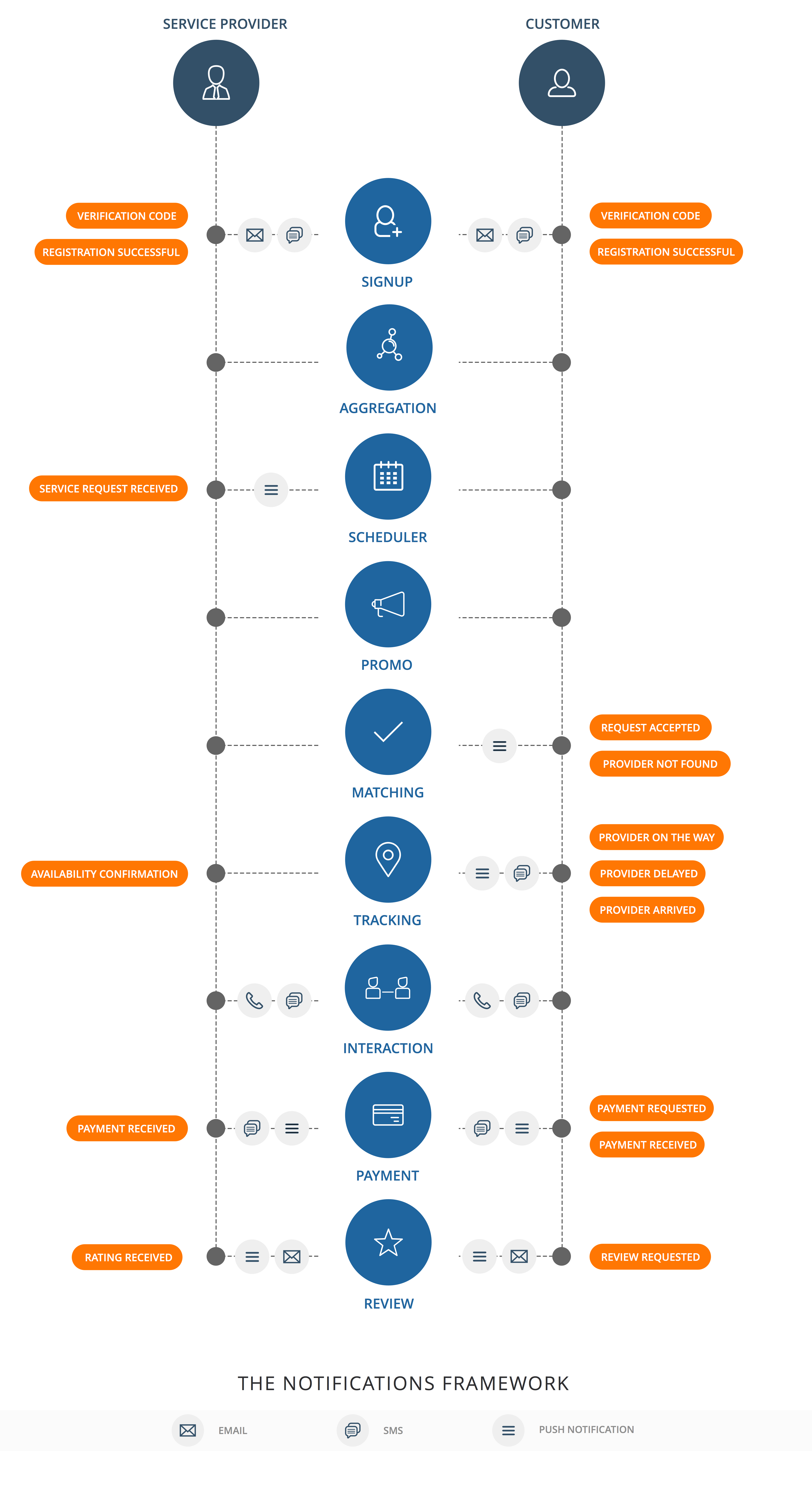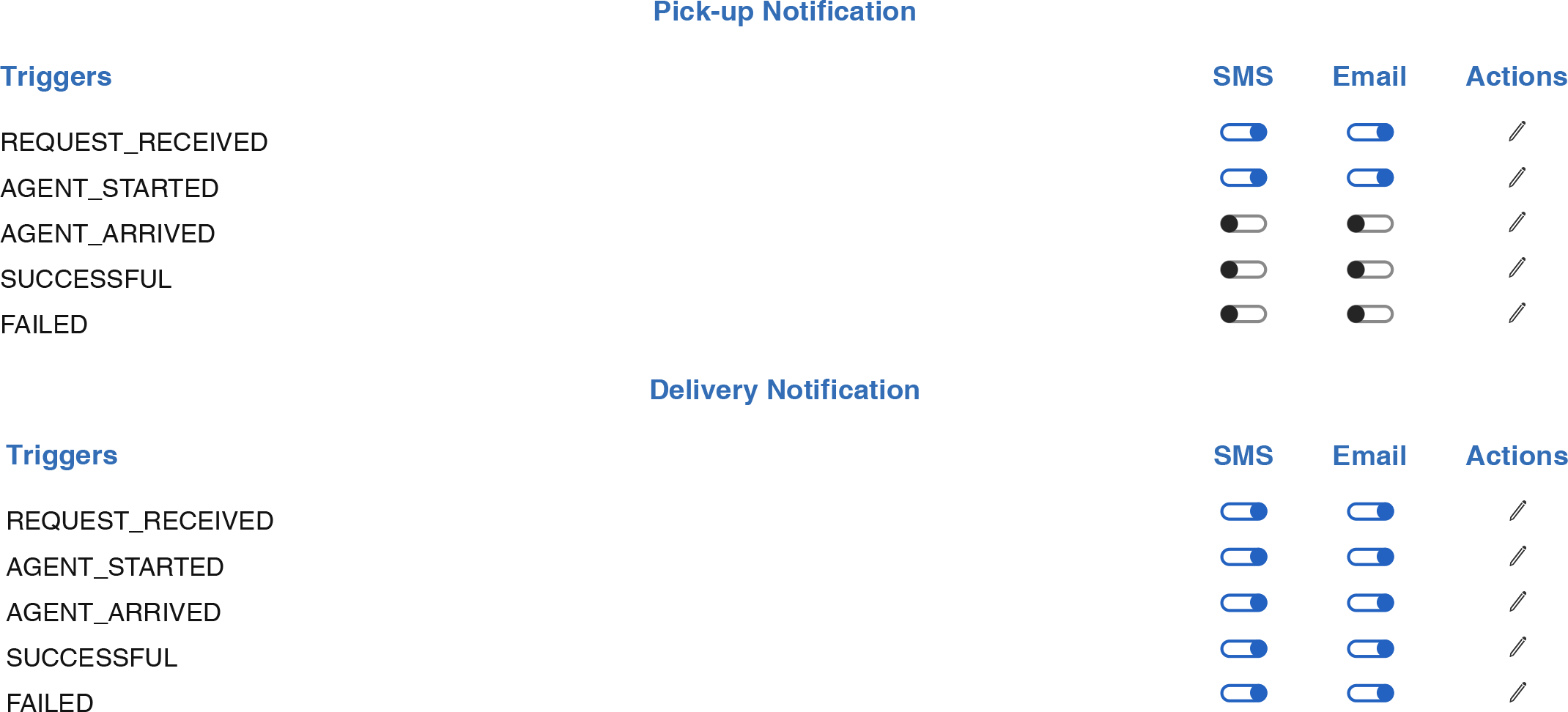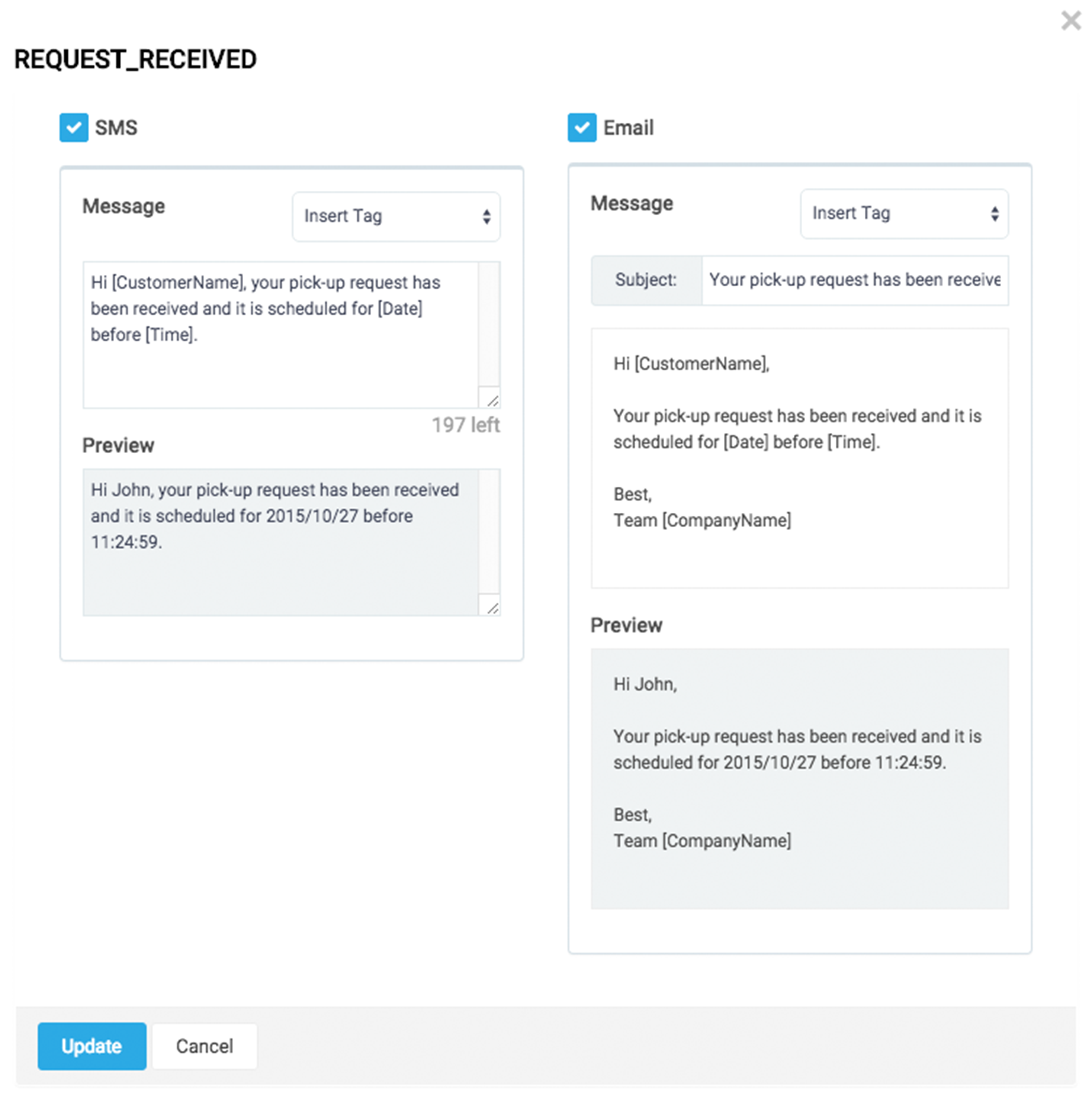
- Products
- Solutions
- Learn
- Partner
- Try Now
This is the fourth part of an 8 part series called ‘User Journey on an On-Demand Business Platform’
The On-Demand economy prides itself on being able to directly connect a service provider and consumer by removing the middleman from all transactions. It has only been able to make this traditional source of information obsolete with the use of a robust real-time notification framework. Any on demand business can only function successfully if there is timely, relevant and transparent communication between stakeholders as all actions depend on it. When not transactional in nature, notifications serve as an excellent way to automate your marketing, enabling you to create personalized and targeted marketing campaigns.
The first thing that comes to your mind when you hear the word ‘notification’ may be the alerts you see on your phone from your Facebook or Snapchat app. Such alerts are called push notifications and are only a small part of the notification framework, as you will read further. Over the years, we have done extensive work on this indispensable module and attempted to build the perfect notification framework for each business vertical. As new APIs have come into the market, we have become more flexible and evolved with the needs of the present day.
In this follow up analysis, we have provided insights into how our notifications module has been designed to satisfy the core requirements of different business models. Hope it answers most questions that you have in mind about this communication channel.
Understanding the Notification Framework
A typical notification framework has the following components –
Stakeholders : The people involved in a transaction on your platform
Trigger : An event/occurrence that causes communication between stakeholders
Mode : The channel chosen to communicate with the stakeholders
Content : What is the message saying to the stakeholders?
Action : What does interacting with a notification lead to?
Taking an example of the notification flow in an on demand setup, we have tried to show how our framework makes it possible for different stakeholders to communicate.
Types of Notifications
Trigger based notifications are sent during an individual’s user journey on the app. They are specific to the transaction happening between the customer and service provider. For eg. a verification code sent to your phone on sign-up or a message that lets you track your service provider are trigger based notifications, as they resulted from an interaction with the app that’s unique to that customer-service provider combination at that time. Our notifications module lets you be fluid with the triggers, modes, content and actions of the notification framework, enabling you to highly customize each notification sent out to users in no time.
Broadcast or Bulk Notifications
Broadcast notifications are sent to multiple users at the same time. You could send different notifications to different user groups based on certain filters or even send the same notification to all users. For eg. you could send a reminder to people who haven’t interacted with the app in 7 days or target promotional offers based on what they have chosen before on your app. The panel we build for you allows you to capture valuable customer data that can be leveraged for marketing automation. You can create a relevant experience for each user and vary your outreach via SMS, push, email, in-app messages etc.
Setting Triggers and Modes for Your Notifications
You can automate the notification process by setting Triggers in the admin panel we create for you. You can set these triggers as events that will cause a predefined notification to be sent to users on your app. A good way to understand this is to look at this screenshot below from the backend panel we created for a ‘Pickup and Delivery’ business:
Upon receiving a request for pickup (trigger called Request_Received), an SMS and Email is sent to the user confirming it. A notification is also sent when the pickup agent has started towards the customer ’s destination. Similarly, delivery notifications are sent via SMS/Email when an agent starts, arrives, a successful delivery is made etc. You can enable or disable the notification channels at will. You can edit the message content under ‘Actions’ and you can read more on customization in the next section.
Customizing the Content of Notifications
The admin panel we create for you allows you to have different configurations for your SMS/Emails. You have the freedom to modify or add variables associated with a custom notification. A screenshot below from one of the panels we have created will help you understand this better. When you click to edit actions, you can edit the content of the message and insert tags.
Making Notifications Actionable
While notifications are central to effective communication on a platform, making them actionable helps people to seamlessly navigate to the next module in their user journey, hence pushing them forward intuitively. Clicking on alerts on your phone’s notification panel should ideally let you take an action to move ahead. Following certain best practices for sending out a notification helps you make the most of them where engagement with the user is concerned. Here’s an example of what actionable notifications do :
Mapping Notification to the User
Each device has a unique token that is provided by the interaction of the OS with the server where the app is hosted. It is this unique ID that is used when sending notifications to a user group. Large number of notifications are usually sent in batches, not continuously. For example, if a food delivery business has to send a message that reads ‘The kitchen is open now!’, it will select a user group from its database (filtering it if required) and send the message to the unique device IDs.
Integrating Notification APIs in your App
While you already have your idea, selecting proper features and using the right software integrations will not just take you ahead of your competitors, but will make you ready to tap the immense potential in the future. We ensure that we remain immensely flexible while creating your app and you get to control and customize the different aspects of the notification framework. Some excellent notification APIs that we are currently integrating in the apps we are building are :
SMS : APIs by Twilio, Plivo, Nexmo enable you to send alerts, reminders, emergency notifications, personalized or broadcast SMS messages in bulk to all your customers. APIs are available for the following features:
- Verification Calls & OTP
- In-App Calling & Texting
- Trigger based notifications
- Number Masking
- Broadcast Messages
Email : Secure delivery APIs like Mandrill, SendGrid are ideal for sending data-driven transactional emails, including targeted and personalized one-to-one messages. Some of their salient features are:
- Multiple domains per account
- Automatic feedback loop registration (to track spam complaints)
- Analytics Integration with your own database
- Custom tagging and tracking options
- Split testing
Push : We use Google Cloud Messaging (GCM) for Android and APNS (Apple Push Notification Service) for iOS for push notifications from your app.
User Permission for Receiving Notifications
Push: Before an app can send a notification, the user must grant it the right to do so. This is a common requirement when an API tries to interact with something outside an app — at least once, the user needs to specifically grant that application permission to present notifications.
SMS/Email: Users can specify their SMS/Email notification preferences from within an app.
Tracking User Engagement
Using the analytics panel we create for you, you can easily track the open rate of the notifications. You would also know if something goes wrong with the notification; this is usually because the notification couldn’t be displayed for some reason.
Limitations of Sending a Notification
There’s a term for the bytes in a notification called payload. The acceptable limit of a payload is different for each OS. If a notification exceeds that limit, it will be rejected by the server. While there is no limit in Android, iOS limits the payload to a maximum of 2 KB.
Go to Part 5/8 : ‘Location Tracking APIs for On-Demand Services’ here >>>
Get in Touch with us if you are looking to create the next big disruption with your on-demand business idea! We have got your tech covered. No worries.
Subscribe to stay ahead with the latest updates and entrepreneurial insights!

Subscribe to our newsletter
Get access to the latest industry & product insights.

























